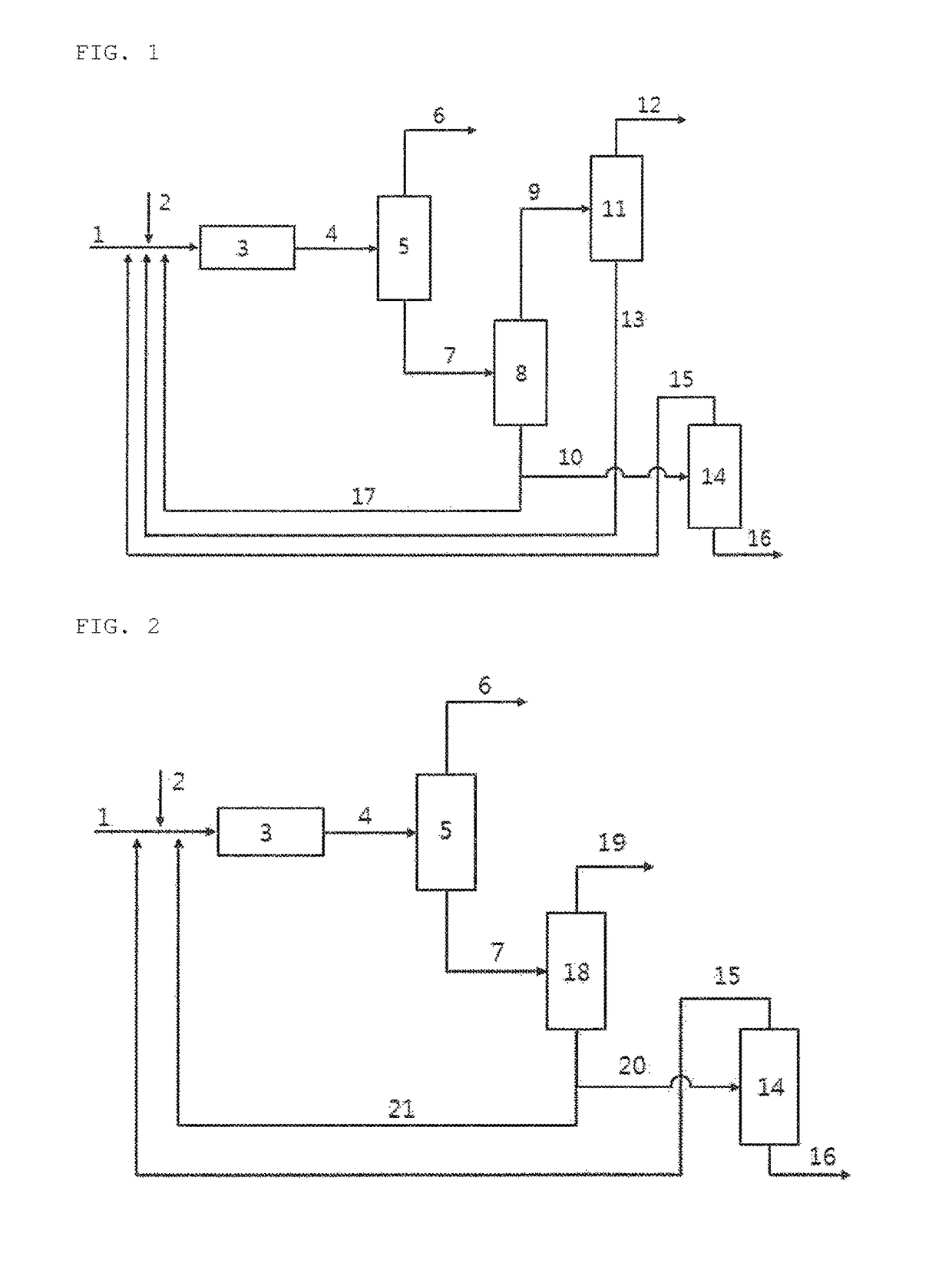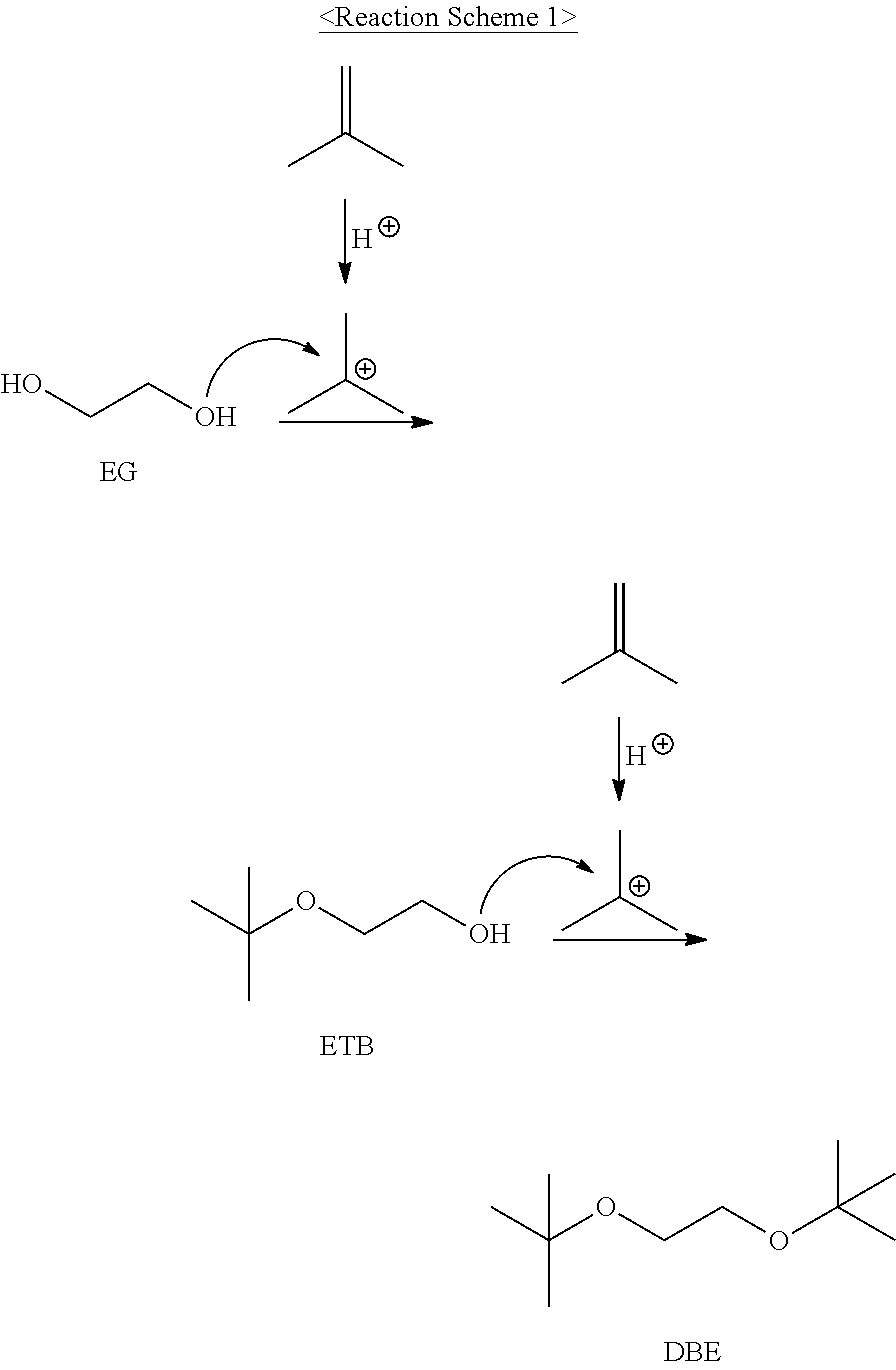Method for preparing high purity isobutene using glycolether
a technology of isobutene and glycol ether, which is applied in the direction of ether preparation, hydrocarbon preparation catalysts, organic chemistry, etc., can solve the problems of reducing the activity of catalysts, unable to economically separate from hydrocarbon mixtures by distillation, and small boiling point of 1-butene, etc., to achieve economic preparation, simplify manufacturing processes, and stably prepared
- Summary
- Abstract
- Description
- Claims
- Application Information
AI Technical Summary
Benefits of technology
Problems solved by technology
Method used
Image
Examples
examples 1 to 7
Preparation of Isobutene
[0041]As the glycol ether polymerization reactor 3, 100 g of a strongly acidic solid ion exchange resin (Product name: Amberlyst 15, manufacturer: Rohm&Hass) as an acid catalyst packed into a vertical tubular reactor (made of SUS316), provided at an outer side thereof with an oil heating bath and having an inner diameter of 25.4 mm and a length of 100 cm, was used. As the first distillation column (C4 distillation column 5), a distillation column having a theoretical plate number of 15 was used. In addition, a distillation column having a theoretical plate number of 30 was used as the second distillation column (glycol ether distillation column 8) used to separate glycol ether, and 100 g of a strongly acidic solid catalyst (Product name: Shacnite #136, manufacturer: Daeil Chemical, Co., Ltd) packed into a vertical tubular reactor (SUS316), provided at an outer side thereof with an oil heating bath and having an inner diameter of 25.4 mm and a length of 100 cm...
PUM
| Property | Measurement | Unit |
|---|---|---|
| temperature | aaaaa | aaaaa |
| temperature | aaaaa | aaaaa |
| wt % | aaaaa | aaaaa |
Abstract
Description
Claims
Application Information
 Login to View More
Login to View More - R&D
- Intellectual Property
- Life Sciences
- Materials
- Tech Scout
- Unparalleled Data Quality
- Higher Quality Content
- 60% Fewer Hallucinations
Browse by: Latest US Patents, China's latest patents, Technical Efficacy Thesaurus, Application Domain, Technology Topic, Popular Technical Reports.
© 2025 PatSnap. All rights reserved.Legal|Privacy policy|Modern Slavery Act Transparency Statement|Sitemap|About US| Contact US: help@patsnap.com



